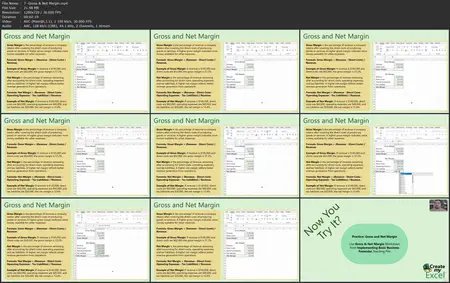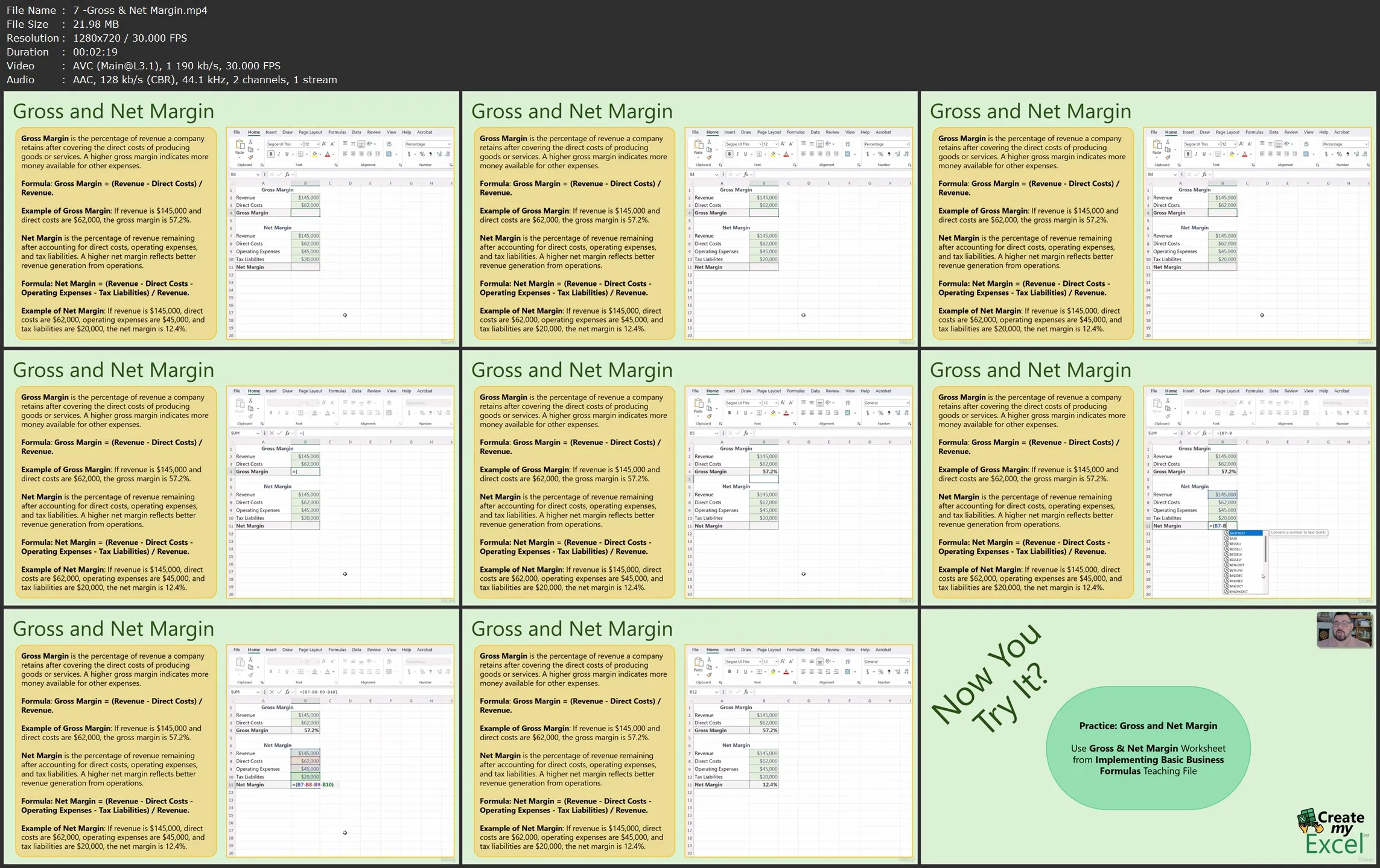Basic Business Formulas in Microsoft Excel
.MP4, AVC, 1280x720, 30 fps | English, AAC, 2 Ch | 40m | 595 MB
Instructor: Ben Scholl
.MP4, AVC, 1280x720, 30 fps | English, AAC, 2 Ch | 40m | 595 MB
Instructor: Ben Scholl
Learn essential Excel formulas for pricing, financial analysis, inventory, and liquidity management in business.
What you'll learn
- Learn how to create pricing formulas to calculate costs, markups, and discounts automatically.
- Understand how to apply break-even analysis to assess product profitability.
- Use Excel to calculate cost of goods sold for accurate business reporting.
- Build formulas for gross and net margin to track business performance.
- Analyze sales using financial ratios and formula-driven insights.
- Calculate fixed-asset ratios to understand asset efficiency and turnover.
- Manage inventory using formulas that track levels, usage, and restocking.
- Measure accounts receivable and payable using liquidity-focused ratios.
- Create working capital formulas to monitor cash flow and financial health.
- Apply liquidity index formulas to assess short-term financial stability.
Requirements
- Microsoft Excel (Office 2021 or Microsoft 365) installed.
- Basic knowledge of Excel (e.g., entering data, simple calculations).
- Access to a computer with a stable internet connection.
- No prior advanced Excel skills required; suitable for beginners.
Description
Implementing Basic Business Formulas, offers a comprehensive exploration of key Excel formulas designed specifically for practical business applications. This chapter equips learners with the skills to create dynamic and customizable models that streamline financial analysis and business decision-making.
The course begins by introducing essential pricing formulas, including methods to calculate price discounts and understand markups, allowing students to develop flexible pricing strategies. Learners will then delve into break-even point analysis, gaining the ability to evaluate product profitability and business sustainability accurately.
A significant portion of the chapter focuses on financial formulas such as sales ratios, cost of goods sold (COGS), and calculations of gross and net margins. These concepts help learners assess profitability and operational efficiency. Inventory management is thoroughly covered, with formulas for tracking stock levels, calculating inventory ratios, and managing reorder points to maintain optimal stock control.
Students will also learn liquidity-related calculations, including accounts receivable and payable ratios, working capital assessment, and liquidity indexes, which are critical for monitoring cash flow and short-term financial health.
Throughout the chapter, learners engage with real-world examples and case studies, applying formulas to scenarios such as pricing models, inventory management, and financial reporting. By the end, students will be proficient in implementing basic business formulas to automate calculations, improve accuracy, and support data-driven decisions within Excel, using Office 2021 and Microsoft 365.
Who this course is for:
- Business students looking to improve their Excel skills for financial analysis.
- Entry-level analysts who want to master core business formulas in Excel.
- Entrepreneurs managing their own pricing, cost, and margin calculations.
- Finance interns who need practical Excel experience for daily tasks.
- Office professionals aiming to build smarter spreadsheets for business metrics.
- Accountants who want to enhance efficiency using Excel’s built-in functions.
- Small business owners who want better insight into cash flow and working capital.
- Inventory managers needing simple Excel tools to track stock and turnover.
- Administrative staff who support finance teams and need formula knowledge.
- Anyone who wants to use Excel for real-world financial problem-solving.





